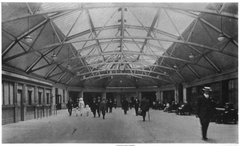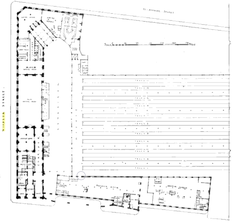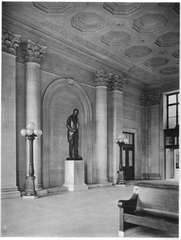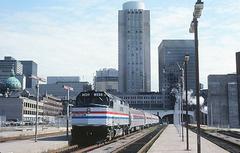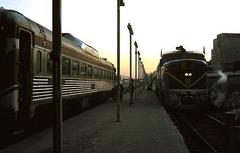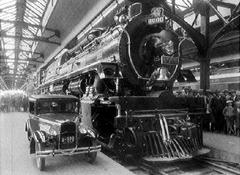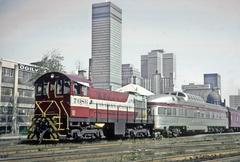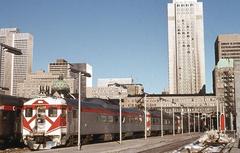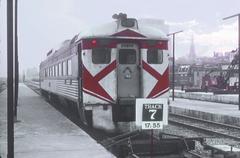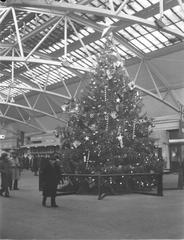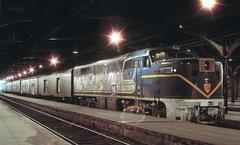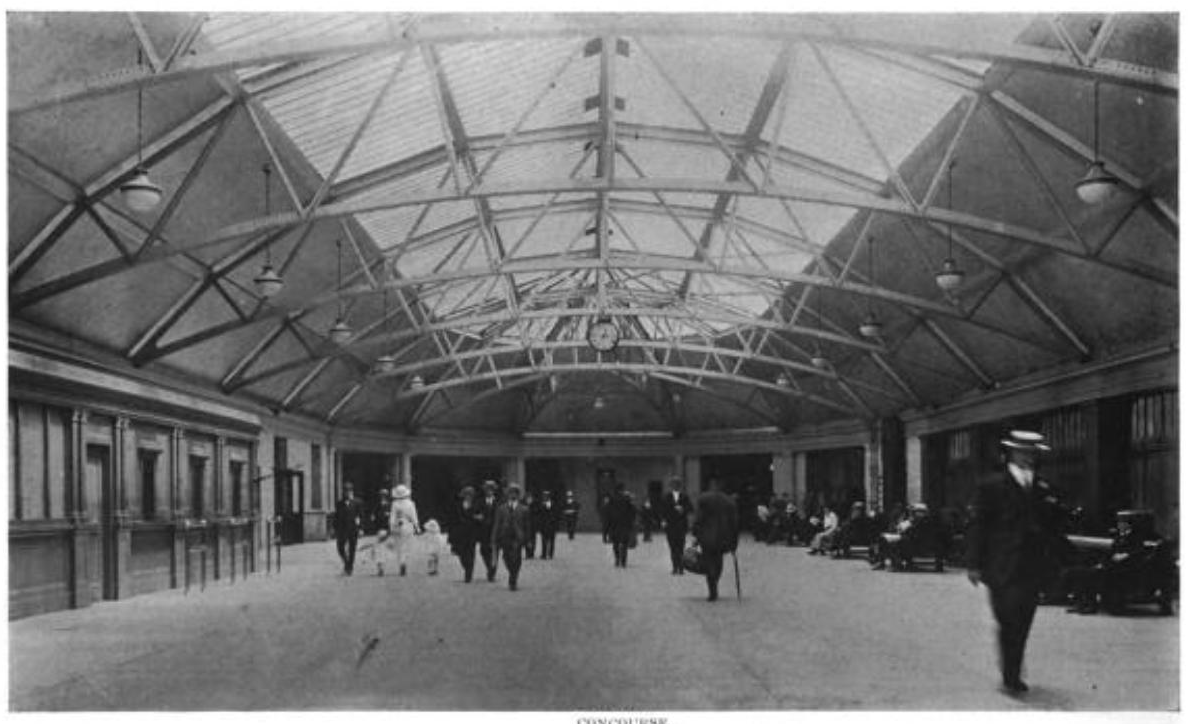
Windsor Station Montreal: Visiting Hours, Tickets, and Historical Information
Date: 14/06/2025
Introduction
Windsor Station, a monumental landmark in downtown Montreal, stands as a testament to Canada’s railway heritage and architectural prowess. Built between 1887 and 1889 as the eastern terminus and headquarters of the Canadian Pacific Railway (CPR), the station was designed by American architect Bruce Price in the Romanesque Revival style. Its robust grey limestone façades, grand arches, and intricate stone carvings evoke the grandeur of medieval European castles (Simple Travel and Recreation; Heritage Montreal). Over more than a century, Windsor Station has played a vital role in Montreal’s transformation into a transportation, economic, and cultural hub.
This guide provides a comprehensive overview of Windsor Station, including its historical development, architectural evolution, current uses, and practical information for visitors. Whether you are passionate about history, architecture, or simply exploring Montreal, this resource will help you plan your visit and appreciate one of the city’s most iconic sites.
Table of Contents
- Introduction
- Historical Overview
- Architectural Significance
- Visiting Windsor Station: Practical Information
- Social, Cultural, and Economic Impact
- Challenges and Preservation Considerations
- Responsible Tourism and Visitor Tips
- FAQs
- Conclusion
- References
Historical Overview
Origins and Early Construction (1887–1889)
Windsor Station’s origins are rooted in the late 19th century, a time of rapid industrial growth and national railway expansion. The Canadian Pacific Railway, seeking a grand terminal for its eastern operations, commissioned the construction of Windsor Station in 1887. Designed by Bruce Price, the building was completed in 1889, with the first train departing that same year (Wikipedia). The station’s Romanesque Revival design, with its imposing limestone structure and broad arches, reflected the CPR’s ambition and Montreal’s emergence as a major North American hub (Parks Canada; Historic Places Days).
Architectural Evolution and Expansions (1900–1924)
Windsor Station underwent several expansions to meet Montreal’s growing demands:
- 1900–1906: Edward Maxwell extended the building, maintaining its Romanesque Revival style and creating a striking façade along De La Gauchetière Street (Parks Canada).
- 1909–1914: W.S. Painter added a Château-style roofline and other elements that complemented the original structure (Wikipedia).
- 1916–1924: The Maxwell brothers built a 15-storey office tower, which became a notable feature of the city’s skyline (Parks Canada).
Signature features include the wide arches, steep roofs, turrets, and detailed limestone ornamentation.
Role in Canadian History and Society
For over a century, Windsor Station was CPR’s headquarters and played a critical role in connecting Canada’s coasts, supporting immigration, commerce, and war efforts. The “Angel of Victory” statue inside commemorates CPR employees who died in World War I (Historic Places Days), highlighting the station’s historical significance.
Decline of Rail Travel and Adaptive Reuse
With the shift from rail to automobile travel, the station ceased passenger services by 1991. Rather than being demolished, the building was preserved, designated a National Historic Site, and adapted for new uses. Today, Windsor Station houses offices, shops, restaurants, and serves as a venue for major events, including the Mondial de la Bière festival (Festival Mondial de la Bière). The former platforms are now part of the Bell Centre complex.
Heritage Recognition and Preservation
Windsor Station has been recognized at the national and provincial levels for its architectural and historical value. It was designated a National Historic Site in 1975 (Parks Canada), a Heritage Railway Station in 1990, and a provincial historic monument in 2009. The building’s preservation is a leading example of successful heritage conservation in Montreal (MTL.org).
Urban Context
Strategically located at 1100 Avenue des Canadiens-de-Montréal, Windsor Station sits near Place du Canada, Dorchester Square, and the Bell Centre. This prime downtown location makes it a central point for exploring Montreal’s urban fabric (Historic Places Days).
Architectural Significance
Architectural Style and Influences
Windsor Station exemplifies the Romanesque Revival style, popularized by Henry Hobson Richardson. The building features heavy stonework, deep-set windows, and grand arches, evoking the feel of a medieval European fortress (Heritage Montreal). Local greystone limestone gives the façade a distinctive texture and permanence.
Layout and Notable Features
The original design included a grand concourse, vaulted ceilings, and expansive waiting areas. The main entrance on Peel Street boasts a prominent arched portal, flanked by asymmetrical towers, and the building’s L-shaped footprint follows the alignment of the CPR tracks (Canada’s Historic Places).
Expansion and Modifications
Successive expansions by architects Edward Maxwell and W.S. Painter added wings, a five-arch carriageway, a clock tower, and a glass-roofed concourse, enhancing both the scale and elegance of the station (Montreal Gazette).
Conservation and Restoration
Conservation efforts have addressed masonry restoration, clock tower repairs, and retrofitting for accessibility, ensuring that Windsor Station remains a vibrant and functional heritage site (Heritage Montreal).
Visiting Windsor Station: Practical Information
Visiting Hours
Windsor Station’s public areas are generally open Monday to Friday, from 8:00 AM to 6:00 PM. Weekend access is typically available during public events and exhibitions. Hours may vary, especially during holidays or special occasions; always check La Station 1889 or the official event calendar for updates.
Tickets and Admission
Entry to public areas is free. Special exhibitions and events may require tickets or advance registration. For details about upcoming events and ticketing, consult La Station 1889.
Accessibility
Windsor Station is fully wheelchair accessible, with ramps, elevators, and accessible restrooms. Visitors with additional needs are encouraged to notify staff in advance.
Guided Tours and Events
Guided tours are offered periodically during heritage festivals and special events, focusing on the station’s history and architecture. The venue also hosts major gatherings, such as the Mondial de la Bière festival and Formula 1 Grand Prix parties (Festival Mondial de la Bière).
Nearby Attractions
The station’s location in the heart of Montreal makes it easy to visit nearby sites such as the Bell Centre, Mary, Queen of the World Cathedral, Dorchester Square, and Old Montreal (A View On Cities).
Photography Tips
The exterior’s arches and towers are best photographed in the late afternoon. Interior shots of the vaulted ceilings and stonework are particularly striking—photography is permitted in public areas but may be restricted during private events.
Directions and Transit
- By Metro: The Lucien-L’Allier and Bonaventure stations (Orange Line) are within walking distance.
- By Bus: Multiple city bus lines serve the area.
- By Car: Parking is available at the Bell Centre and nearby lots, but public transit is recommended during busy events (STM).
Social, Cultural, and Economic Impact
Urban Development and Community
Windsor Station’s presence spurred the growth of downtown Montreal, attracting businesses, workers, and visitors and transforming the area into a lively urban center (Geographic Book). Its central location fostered multicultural interactions and social exchange.
Infrastructure and Accessibility
The station prompted improvements in roads, hotels, and public amenities, benefiting both travelers and residents (Bonjour Québec).
Cultural Exchange and Arts
Windsor Station continues to host exhibitions and performances, supporting Montreal’s arts scene and promoting cultural learning (Geographic Book).
Economic Benefits
The adaptation of Windsor Station into a multi-use venue has generated employment and economic activity, supporting jobs in hospitality, retail, and cultural industries (Geographic Book).
Challenges and Preservation Considerations
Balancing Tourism and Local Needs
Windsor Station faces the ongoing challenge of serving both visitors and locals while preserving its historic character. Sustainable tourism strategies are essential to maintain community benefit and site integrity (Geographic Book).
Heritage Conservation
Urban redevelopment pressures require careful planning to protect Windsor Station’s architectural and historical values (Bonjour Québec).
Responsible Tourism and Visitor Tips
- Respect historical features and public spaces.
- Support local businesses and artists.
- Participate in guided tours and cultural events.
- Follow posted guidelines during events and exhibitions.
Frequently Asked Questions (FAQ)
Q: What are Windsor Station’s regular visiting hours?
A: Public areas are open Monday–Friday, 8:00 AM–6:00 PM. Event hours may vary; check La Station 1889 for details.
Q: Is there an admission fee?
A: No fee for public areas; some special events require tickets.
Q: Is the station accessible for visitors with disabilities?
A: Yes, with ramps, elevators, and accessible restrooms.
Q: Are guided tours available?
A: Yes, occasionally during heritage festivals and special events.
Q: Can I take photos inside Windsor Station?
A: Yes, photography is generally allowed in public areas.
Q: What are nearby attractions?
A: Bell Centre, Mary, Queen of the World Cathedral, Dorchester Square, Old Montreal.
Conclusion
Windsor Station remains a powerful symbol of Montreal’s railway history and architectural heritage. Its transition from a major passenger terminal to a vibrant event space illustrates the city’s commitment to preserving its past while embracing contemporary urban life. Visitors are encouraged to explore the station’s architectural highlights, engage with its cultural offerings, and discover the surrounding downtown attractions. For the latest information on hours, events, and tours, consult official resources and the Audiala app to make the most of your visit (Heritage Montreal; Tourisme Montréal).
References
- Windsor Station Montreal Visiting Hours, History, and Visitor Guide, 2021, Simple Travel and Recreation (Simple Travel and Recreation)
- Architectural Significance and Visitor Guide to Windsor Station, Montreal, Heritage Montreal (Heritage Montreal)
- Windsor Station Montreal: Visiting Hours, Tickets, and Historical Site Guide, A View On Cities (A View On Cities)
- Windsor Station on Parks Canada, 1995 (Parks Canada)
- Festival Mondial de la Bière (Festival Mondial de la Bière)
- La Station 1889 Official Website (La Station 1889)
- Tourisme Montréal (Tourisme Montréal)
- Bonjour Québec (Bonjour Québec)
- Geographic Book (Geographic Book)
- Montreal Gazette (Montreal Gazette)
- Canada’s Historic Places (Canada’s Historic Places)
- MTL.org (MTL.org)
- STM (STM)
